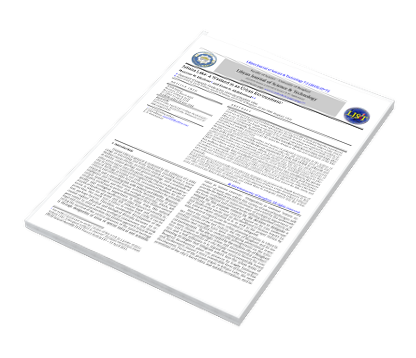Juliana Lake: A Wetland in an Urban Environment
DOI:
https://doi.org/10.37376/ljst.v7i2.2241Keywords:
Juliana Lake, Landscape ecology, Environmental, awareness, Biodiversity, Sediments and biotal , componentsAbstract
Of all the remaining natural habitats of Benghazi’s urban area (NE Libya), perhaps the most threatened are its karst lakes and coastal salt marshes (locally known as Sebkha). Juliana Lake stands
out as one example of a fragile ecosystem that is steadily shrinking and exposed to dredging, infilling and, consequently, possible damage to its aquatic organisms, and the inevitable loss of its
renowned biodiversity. Several 19th & 20th–century traveller’s sketches and maps, soil maps, photographs and satellite images provide the bases for change in the size and magnitude of the lake
and its adjacent areas over time.
Assessment of the sediment composition and texture of material accumulating at the bottom of
the lake reveals mixtures of Sebkha sediments such as salty clay, silt, and clayey sand, while sediments at the surface and around the lake are represented by quite soft whitish to yellowish and
scattered patchy limestones of unknown affinity. Terra-rossa and Quaternary caliche are present
also, but calcarenites cover considerable part of the studied area. The bio-micro components of
these sediments are described and a number of small-sized benthic foraminifera have been identified. Macrofauna, which are primarily presented by recent benthic seashells belonging to phylum mollusca, have also been investigated and several species have been identified to the species
level wherever possible. Other calcareous biotic components are predominantly shell fragments
of molluscs, echinoderms and calcareous coralline red algae. It is concluded that the distribution,
diversity and abundance of the total benthic organisms recovered in this survey reflect the habitat's richness in nutrients and consequently providing important food source for fish, birds, and
mammals.
It is argued that environmentally based planning strategies can preserve the fragile landscapes of
Benghazi and, furthermore, ensure a more sustainable form of future urban development. In this
context, urban planners should review routine urban planning practices affecting Juliana wetland
and other natural landscapes of Benghazi, and adjust them to integrate nature into the urban
scene of current and future development plans.
Downloads

Downloads
Published
How to Cite
Issue
Section
License
Copyright (c) 2022 Libyan Journal of Science &Technology

This work is licensed under a Creative Commons Attribution-NonCommercial-NoDerivatives 4.0 International License.









 LJST Copy rights form
LJST Copy rights form


